Full sun and 22 degrees are expected tomorrow at Taghazout Bay Morocco's new tourist destination. It is not a surprise, after all it is May: but here the climate is mild all year round, we are in a paradise for sunbathers, relaxers and surfers. Only in summer does the temperature rise too high and then it is a delight to cool off with a swim in the waters of the Atlantic. Or in the swimming pool. Or rather, in the many swimming pools.
TOURISM DEVELOPMENT - Because Taghazout Bay, a stone's throw from the picturesque fishing village of Taghazout, and some 20 kilometres from Agadir, on the coast of south-central Morocco, has become the epicentre of a bet by the Rabat government: to make it a high-end international destination. Major investments are planned, amounting to some 10 billion dirhams, the equivalent of just over 900 million euros; Agadir airport will be expanded, more flights will arrive, roads are being built to better regulate traffic... All this, to support the arrival of large luxury hotel chains. There will be nine once the work is complete. And there are already establishments like Hilton, Radisson, Hyatt, Marriott will arrive, but the most glittering is and will be the one where we are, the Fairmont Taghazout Bay, 146 rooms and suites spread over a vast area and with a low environmental impact, plus four independent villas, all following the dictates of environmental and social sustainability, using local stone, saving water, 65% of the workforce made of locals, etc.
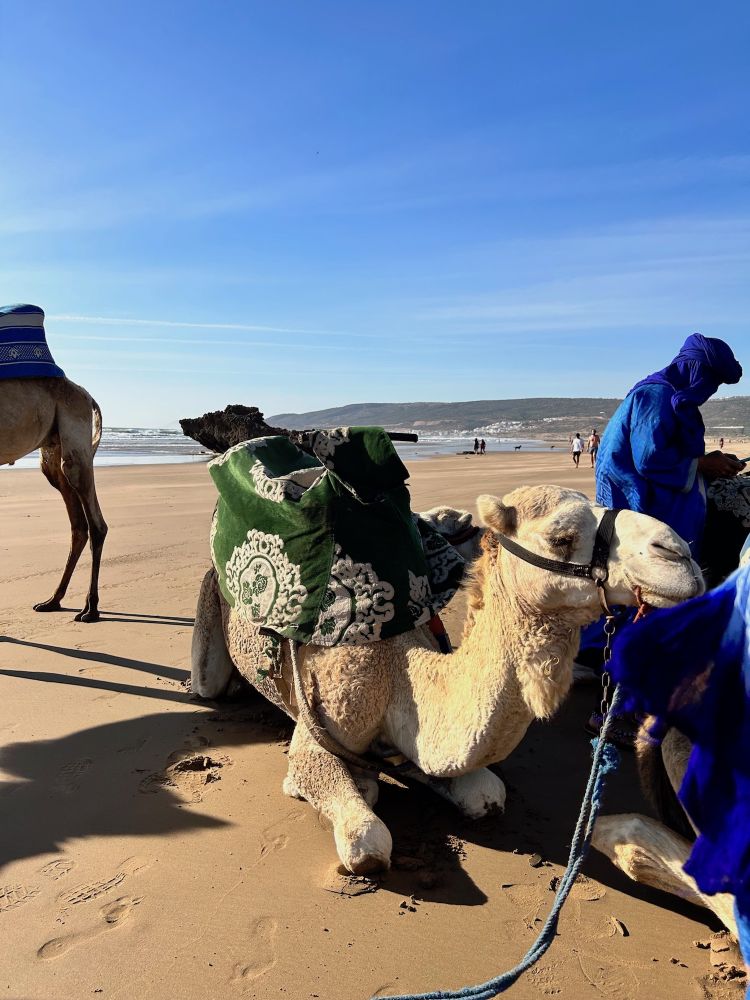
– The intention is that the entire project should maintain the authenticity of this beautiful and little-known Morocco abroad, so that it does not turn into an artificial Disneyland of cosmopolitan tourism. The planning is shrewd already: over the entire area, which covers 615 hectares along a 4.5-kilometre coastline of unspoilt beaches, a ratio of only 10.5 per cent in land use is envisaged (to build 7,450 beds for tourists, when fully operational), the rest will be nature.
Taghazout Bay has become Morocco's first eco-responsible tourist resort and was conceived around three fundamental pillars: environmental protection, social responsibility and sustainable development. The ambition is to make it the country's new pole of attraction, reviving an old primacy: the Agadir area was the first destination for travellers in the country, before the Marrakech boom
THE FAIRMONT TAGHAZOUT BAY - The
Fairmont Taghazout Bay, opened in July 2021, is a modern and elegant oceanfront resort, set in 18 hectares of gardens, between the lapping shores of the Atlantic Ocean and the argan-green slopes of the Atlas Mountains. It celebrates in its architecture the rich Moroccan heritage through subtle Berber references; it has a large spa, heated indoor and outdoor swimming pools, a kids' club, and has a golf course only two kilometres away, the
Tazegzout with 27 holes designed by the world specialist
Kyle Phillips (there are other 18- to 36-hole golf courses in the immediate vicinity). The area is also famous for surfing: around fifty schools suitable for enthusiasts and beginners alike are scattered on this beautiful coastline. And countless activities are on offer. Like the walk along the beach riding camels... Or the excursions on the desert dunes, or along the so-called '
honey road' (it is a widespread handicraft production among the inhabitants, Berbers by birth) towards the nearby Paradise Valley with the Immouzzer des Ida Outanane waterfalls, a gorge carved by the Tamraght river in the Moroccan High Atlas Mountains, full of natural pools, palm trees and oleander plants. A marvel.
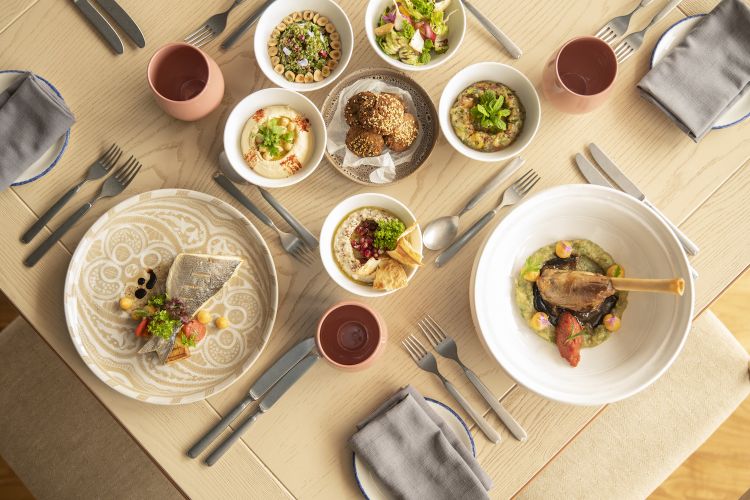
The kitchen at the Fairmont and, below, chef Georgiy Danilov, former pupil of Enrico Crippa at Piazza Duomo in Alba (Cuneo)
- Agadir is Morocco's largest fish port, and the village of Taghazout itself is largely made up of fishermen. Thus fish dominates the local table, along with vegetables, fruit and argan oil, of which the region is a major producer. It is nice to get lost in the narrow streets of the village and enjoy a delicious scone seasoned with lemon peel and oil, fat, bitter, aromatic, delicious. Or taste the
bissara, a puree of broad beans with onions, garlic, fresh herbs and spices. But then, for a fine meal, it's back to the
Fairmont. Here the cuisine is particularly well prepared, thanks to chef
Georgiy Danilov, of Armenian origin but with past experience with
Enrico Crippa at
Piazza Duomo. He coordinates all the in-house restaurants:
The Beef and Reef, where you can enjoy - as we did: royal sole with garlic butter and roasted lemon - very fresh fish seared well on the grill, barbecued meat. The cuisine is enhances the ingredients and is well-crafted. We even tasted the pizza and it was excellently made; then
The Commons, an all-day long establishment of international inspiration; and
Morimoto Taghazout Bay, Japanese cuisine signed by the well-known chef
Masaharu Morimoto. And that's not all: the
Fairmont's Canadian director,
Francis Desjardins, is already planning the opening of a restaurant dedicated to Moroccan cuisine and a further sign, which will be a sort of contemporary, evolved Italian trattoria. Two cocktail bars complete the offer:
Juniper's, under the stars, with its list of endless gins to be paired with botanicals coming directly from the structure's gardens; and
Nola, a speakeasy with a jazz soul, for signature cocktails. Finally, at the
Iris Lounge, there is a selection of teas and pastries throughout the day, but at the hour of the sensational sunset they uncork the champagne!
THE VILLAGE OF TAGHAZOUT - We have already told you about Taghazout, the village that closes the bay to the north, overlooking the ocean, a little over 5,000 inhabitants, mostly Berbers: the place became famous at the end of the 1960s, it was the destination of an off-the-beaten-track tourism from Europe and keen to explore the southern part of Morocco. Some of these French, English or Dutch people fell in love with the place, moved here and you can see them today walking, hunched over, on the beach and gazing with curiosity at the new wave of western visitors. In truth, the coast has long since been discovered by surfers from all over the world, as in Calangute in India or Kuta in Indonesia; the beach just south of the village is renowned for its fine sand and long waves. Then, in addition to growing tourism, the inhabitants also live off fishing, of course, agriculture (citrus fruits, almonds, vegetables), and argan oil...
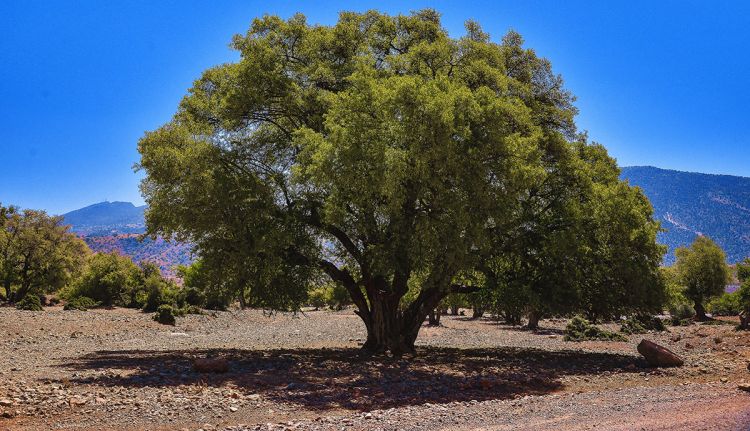
An Argania spinosa plant and, below, the entrance to the argan oil processing museum
- The area around Taghazout, up towards the High Atlas Mountains, is the only place in the world where argan oil is produced, extracted from the seeds of the
Argania spinosa, which is endemic only in this area of southern Morocco. The argan forest, which once covered vast areas of North Africa, now covers some 800,000 hectares between the cities of Essaouira, Agadir and Taroundant: a kind of triangle comprising plains, mountains, coast and desert, because the plant - very ancient, considered a kind of Tertiary relict - is tenacious, adaptable, grows from sea level up to an altitude of 1,500 metres, but is especially important in semi-desert areas, because its deep root system is our ally against erosion and desertification. It is no coincidence that the
arganeraie zone has been declared a
Unesco Biosphere Reserve in 1998. A perfect place to learn more about this ancient process and its economic, social, environmental and gastronomic implications is
Targant - Musée de l'arganier, the first in the world, 4 kilometres from the
Fairmont, a very interesting educational structure that retraces the history and processing of argan oil, but also includes a restaurant where you can enjoy exquisite traditional dishes, really tasty, obviously seasoned with the oil that is the speciality of the place: it tastes of hazelnut, peanut, it is persuasive and stimulates new tasty combinations. The
amlou, which is part of
Slow Food's Ark of Taste, is also excellent: it is a brown spread made by adding honey and ground almonds to argan oil. It is served for breakfast or as a snack, accompanied by bread, but also with pastries. To take home.
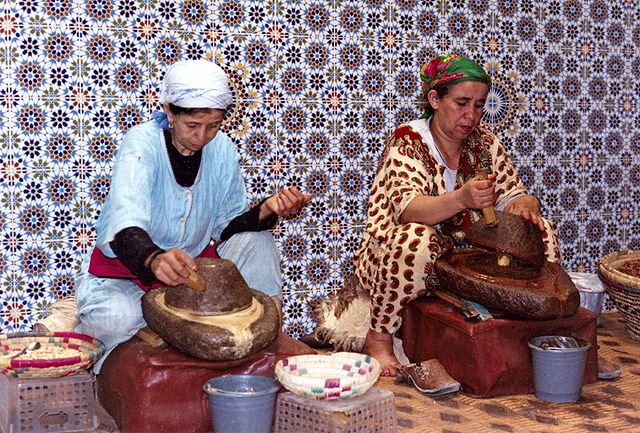
Traditional argan oil processing: entrusted to women in cooperatives
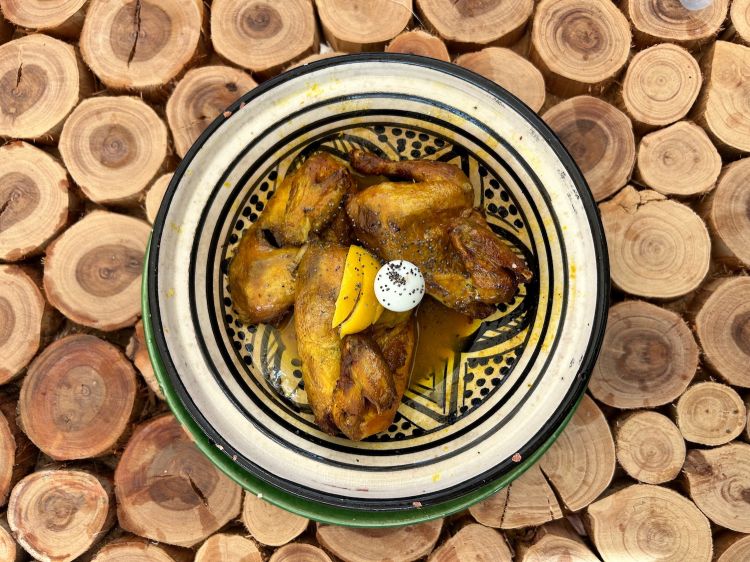
A succulent dish (with argan oil) that we enjoyed in the Targant's in-house restaurant: Chicken mahmer with lemon confit and olives
- At
Targant you will learn that the production of argan oil is entrusted to women's social cooperatives. They who collect and select the fruits of the plant, which have fallen to the ground and, once the sun-dried outer part and the kernel that is covered with it have been removed, extract and process the seeds. There are now laboratories that entrust this last part to machines; but the artisanal method takes much longer (one week to obtain a litre of oil from 2.5 kilos of seeds. And it takes 100 kg of dry fruit to obtain 6.5 kg of seeds) involves first roasting in terracotta pots; then grinding through a manual stone tool, with the help of a little water. A 'paste' is obtained, called
malaxage, 50% rich in oil, which is massaged until the liquid part is separated (the remainder is used as a basic ingredient for the 'black soap' typical of Moroccan hammams).
Translated into English by Slawka G. Scarso